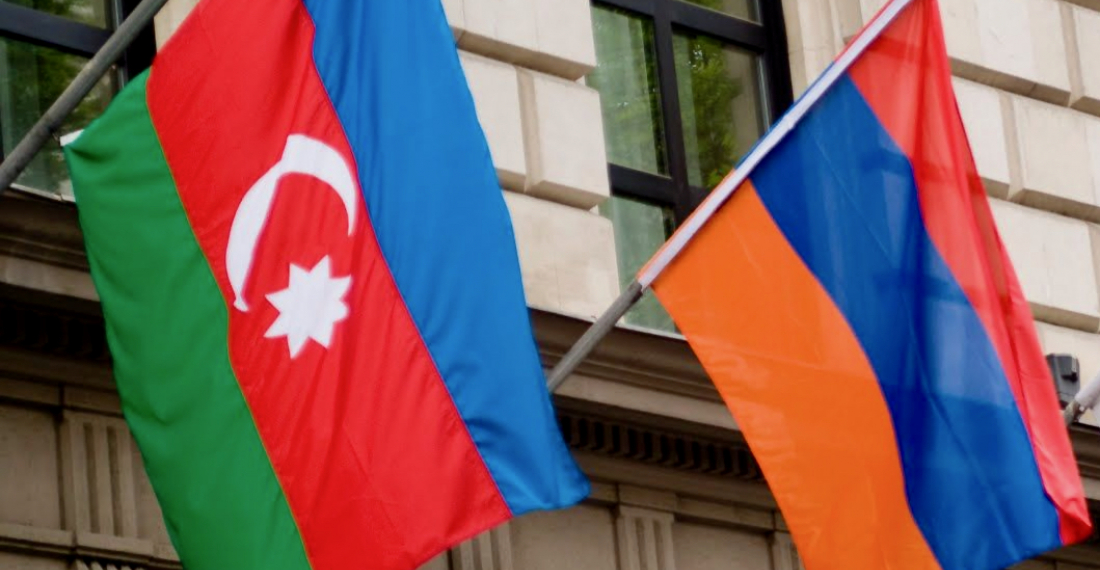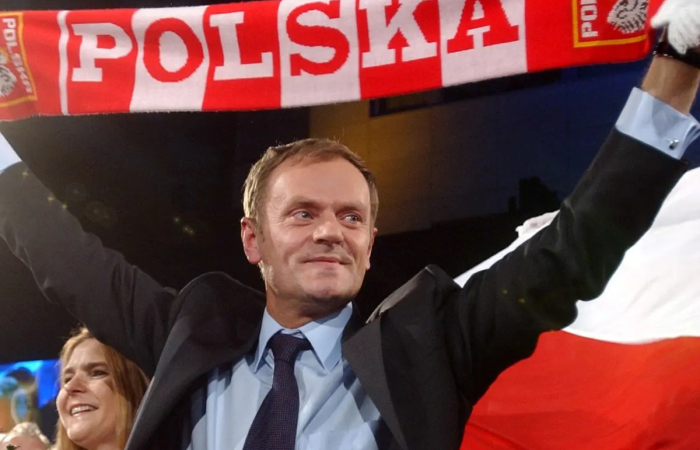In this Joint Policy Discussion Paper, Ahmad Alili and Benyamin Poghosyan welcome the start of negotiations between Armenia and Azerbaijan on a meaningful peace treaty. They warn however that, at all levels, trust between the two sides remains very low and that this will make the process difficult. They urge both sides to conduct the negotiations with a strong sense of realism, and to ensure that the speed of the negotiations is well calibrated.
On 31 August 2022, the leaders of Armenia and Azerbaijan, meeting in Brussels under the auspices of European Council president Charles Michel, agreed to authorise their foreign ministers to start immediate negotiations on a peace treaty. Instead, in less than two weeks, the two sides found themselves negotiating yet another ceasefire.
Armenia and Azerbaijan are slowly emerging from a long period of conflict. Over three and a half decades, tens of thousands died in fighting; hundreds of thousands of people were displaced; tens of thousands of landmines and other unexploded ordnance contaminated huge tracts of territory, and war and enmity became the standard narrative with both Armenians and Azerbaijanis. The 1st Karabakh War in the early 1990s resulted in massive loss of territory by Azerbaijan; the 2nd Karabakh War in autumn 2020 changed the reality on the ground for the second time, nearly, but not completely, restoring the status quo ante.
The political leadership of Armenia and Azerbaijan have both declared their readiness to end the cycle of violence, negotiate on outstanding issues between them, and open a new era of peace – with peace being understood in its widest sense: not just the absence of war but also an active relationship for the mutual benefit of both nations, and of the wider region.
Even after the 13-14 September violence, the two sides reiterated their commitment to negotiate and sign a peace treaty. Senior officials from both sides met in the second half of September in an effort to sustain the momentum of the negotiations, and, on Sunday 2 October, the foreign ministers of the two countries finally set the process of formal negotiations in motion. But the level of trust between the two sides remains low, and in the last weeks, may have become even lower. Despite the fog of warfare and of disinformation campaigns, however, some conclusions can still be reached that can help map out the next steps:
- The decision to negotiate intensively and face-to-face is a very good one.
It is right that the leadership of the two countries have decided to negotiate face-to-face. There are currently two tracks of negotiations, one facilitated by Moscow, and one by Brussels. France and the United States are also contributing to the process. At a time of intense geopolitical competition, with a war raging in Ukraine, maintaining these tracks in complementarity has not been easy, but the Armenian and Azerbaijani leaderships have so far succeeded in doing so, and multiple tracks have given both countries some room for manoeuvre, which is necessary.
- The approach not to artificially prolong the negotiations is correct.
The long, protracted, and apparently fruitless negotiations under the auspices of the OSCE Minsk Group Co-Chair countries from the early 1990s to 2020 haunt the current peace negotiations. Neither country can afford the uncertainty that stems from a simple extension of the current situation, with the risk that it may, by intention or by accident, result in another large-scale war. So protracted negotiations are not the best option, and the decision to move forward promptly with negotiating a peace agreement is logical, even though it brings with it some risks for both sides.
- Lack of trust between the sides and a continued poisoned atmosphere in the space of public debate is a real obstacle to peace that needs to be fully recognised.
Regardless of the political will, the context in which a peace treaty has started being negotiated is very difficult. At every level of Armenian and Azerbaijani society, there is a lack of trust. The debate in the public space on both sides remains mostly adversarial and polarised. The debate on social media is toxic, fed with disinformation, puerile propaganda and flawed analysis. Yet those engaged in these practices are often well-intentioned, and they need to be engaged rather than demonised.
This situation cannot be ignored and needs to be addressed. It will take time, which is why a peace treaty needs to be seen as the start of a journey, and not the end.
- Clashes on the border constitute a huge risk of not only derailing the peace process but also of triggering a new full-scale war.
The clashes on the border between Armenia and Azerbaijan seriously risk derailing the peace process. If these clashes are being provoked intentionally, if they escalate quickly because of misperception, or if they result from unintentional incidents caused by a fluid situation on the ground, they need to be quickly evaluated. This requires increased transparency that can be provided with the help of satellite imagery, electronic monitoring or physical monitoring by third parties acceptable to both sides. There also need to be spaces and safe channels of communication between the two sides at an operational level where incidents can be discussed if they happen and, if possible, prevented from happening at all.
An early peace treaty is necessary but will never solve all the issues. Both sides need to approach the negotiations of a peace treaty with a strong sense of realism.
A peace treaty needs to be based on mutual respect. Negotiating it has to be based on a sense of realism, including the cost of failure and the risk that an unsustainable agreement can pose to a lasting peace.
A peace treaty needs to be defining: it must signify a clear break between the past cycle of violence and a future era of peace; it must be comprehensive enough to avoid future ambiguity; it must be of mutual benefit so that both sides can become convinced stakeholders in its upholding and in the delivery of its provisions.
However, a peace treaty does not need to be complete simply because, in the present context, it cannot be. There are issues on which negotiations will have to continue and need more time to be worked out, regardless of the wider political framework that can be agreed upon in a peace treaty. But a peace document containing the main principles on which peace will be established would still be a major step forward.
The peace treaty should have its godparents within the international community.
International engagement with issues related to Armenia-Azerbaijan relations has evolved very quickly over the last two years. Whilst Russia, and particularly president Vladimir Putin, were pivotal in negotiating an end to the 44-day Karabakh War and the signing of the 10 November 2020 trilateral declaration, the European Union, and particularly European Council president Charles Michel have in the last year been instrumental in taking the peace process forward. France and the United States have in recent weeks also been active in supporting the latter process.
It is correct that Armenia and Azerbaijan negotiate the peace treaty without intermediaries. In the end, it is their will that matters.
However, it is also appropriate, and necessary, that once an agreement has been reached, the international community can provide godparents for supporting its implementation. This support will first and foremost have to be financial. A good economic project that can give mutual benefit to thousands from across the two communities is worth a thousand peacekeepers, and many such projects will be necessary.
Some international presence on the ground may be necessary too for a longer period. In November 2020, based on the trilateral declaration signed by Armenia, Azerbaijan and Russia, Russian peacekeepers were deployed to the Karabakh conflict zone. A new situation will require a new response, including the transformation of the peacekeeping operation. The speed and format of this transition will depend on many factors, and the change may evolve over a period of time.
France, Russia and the United States, for nearly three decades, were mandated as co-Chairs of the OSCE Minsk Process to work towards a settlement of the Armenia-Azerbaijan conflict. Their successes and failures have been much debated. In any case, now Azerbaijan no longer recognises this mandate. It falls on the three countries themselves and the OSCE that gave them their mandate in the first place to take the initiative on defining how the international community wants to engage with Armenia-Azerbaijan relations and the wider region in the future. Whilst this will not be easy given the current impasse in the international situation, this work must now start. The new role of the EU will also need to be recognised.
Building trust and confidence, expanding prosperity
A peace treaty between Armenia and Azerbaijan will be a major breakthrough in the relations between the two countries and the two nations. However, it will remain a piece of paper, and may even become a new source of tension, unless it is accompanied, and quickly followed by a process to build trust and confidence between institutions, people and communities. This task is massive and has hardly started. The Joint Armenian-Azerbaijani Liaison Group of experts working on confidence-building measures in support of lasting peace in the South Caucasus (JOLIG), of which we are co-rapporteurs, in April published its report “The South Caucasus from war to peace: thirty measures between now and 2030”. This report outlines tangible actions that need to be taken in the short, medium and long term. Whilst the report has been widely welcomed, efforts for its implementation have been sluggish. This work now needs to start in earnest.
An Armenia-Azerbaijan peace treaty stands zero chance of success, regardless of the goodwill of the political leadership, unless trust and confidence between the people at all levels is restored.
This can partly be achieved through building economic ties, both at the macro and the micro level, that must pay tangible dividends. Whilst some of this will take some time since it will depend on developing infrastructure, availability of large amounts of funds, and on wider developments, there is a need for “early wins” for the population on both sides. Whilst not everyone is convinced that an “economics first” approach may necessarily be the best approach, everyone agrees that economics cannot come last.
In this regard, proper use needs to be made of what has already been achieved in bilateral practical economic measures of cooperation between Armenia and Georgia, and Azerbaijan and Georgia. There are plenty of opportunities for these bilateral formats to become trilateral formats.
Overall, a process of building balanced, mutually beneficial, economic linkages will help give all sides a vested interest in peace.
Embedding Armenia-Azerbaijan peace in a wider regional context
Armenia-Azerbaijan peace can best be sustained by embedding it in a wider regional context. First and foremost, this should bring Georgia into a series of trilateral regional arrangements that are long overdue and that have strong potential.
Beyond that, the involvement of other nearby countries, including Russia, Iran and Turkey, and beyond the countries of the Black Sea, Central Asia and the Gulf will unleash the potential of the Caucasus Region as the interconnector between east and west, and north and south.
A regional security platform that will include regional and international players, including the US and EU, can be launched at the right time and, in the meantime, should be conceptually discussed by think tanks and academic circles.
The long and arduous journey ahead
Armenia and Azerbaijan have embarked on a long journey towards sustainable peace: it will be arduous, but it is necessary. The journey must neither be done too fast, nor too slow. In fact, calibrating the speed of this journey is going to be the immediate next challenge.
This is a joint Policy Discussion Paper prepared by Ahmad Alili, Director of the Caucasus Policy Analysis Centre in Baku, Azerbaijan, and Benyamin Poghosyan, Director of the Centre for Political and Economic Strategic Studies in Yerevan, Armenia. Both authors are co-rapporteurs of the Joint Armenian-Azerbaijani Liaison Group on confidence-building measures in support of lasting peace in the South Caucasus (JOLIG), an initiative facilitated by LINKS Europe with the support of the European Union.
For more information on the work of the Joint Liaison Group please contact the Secretariat at office@links-europe.eu






